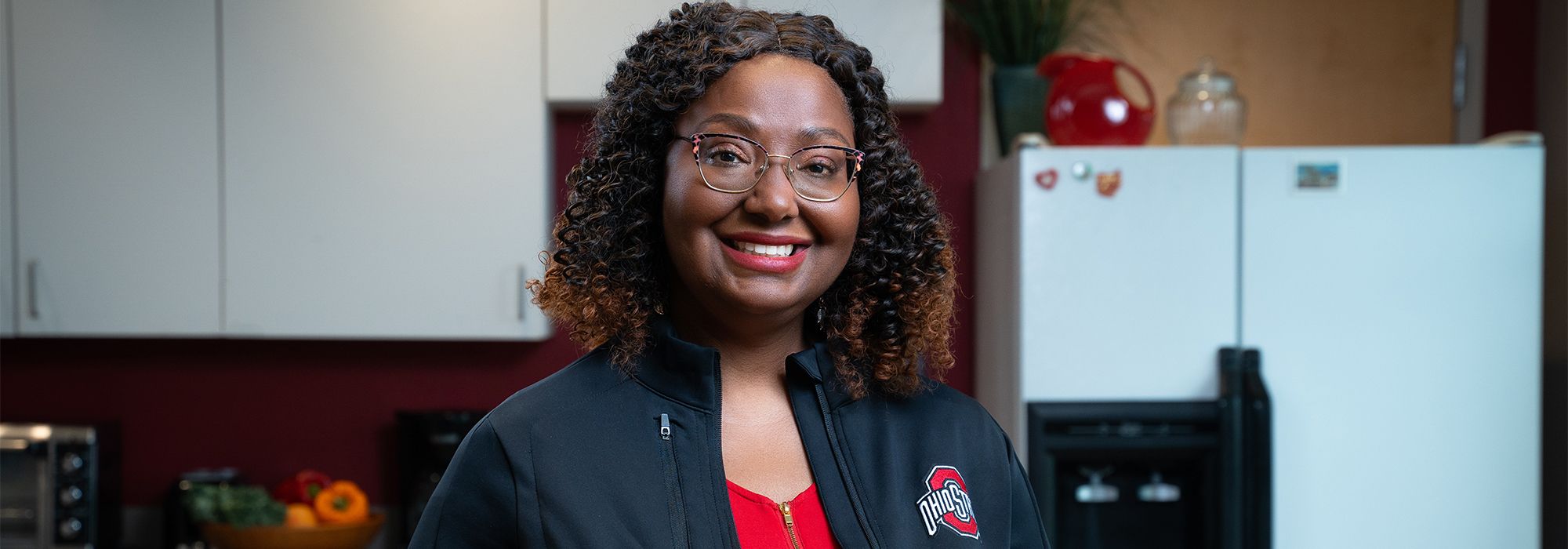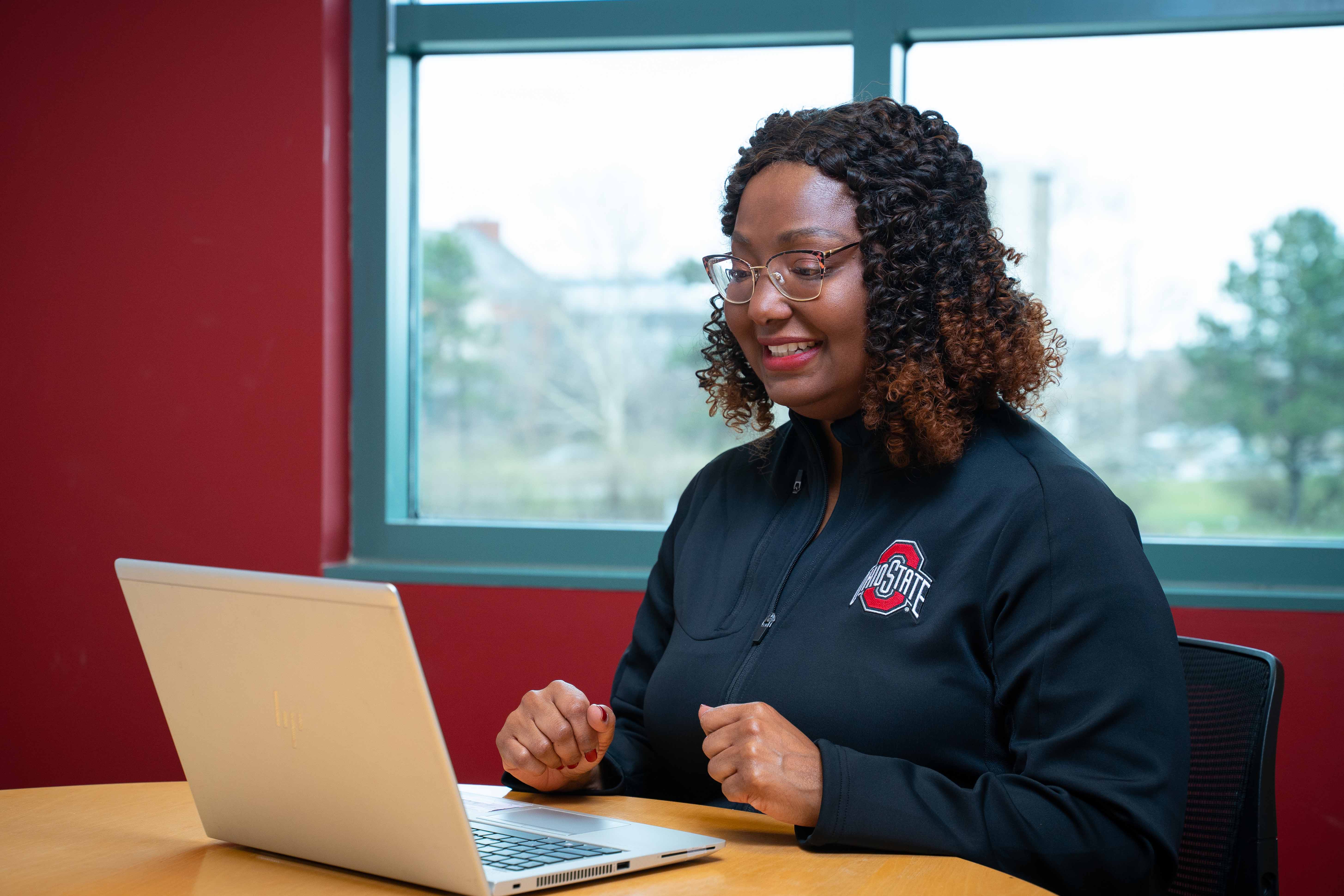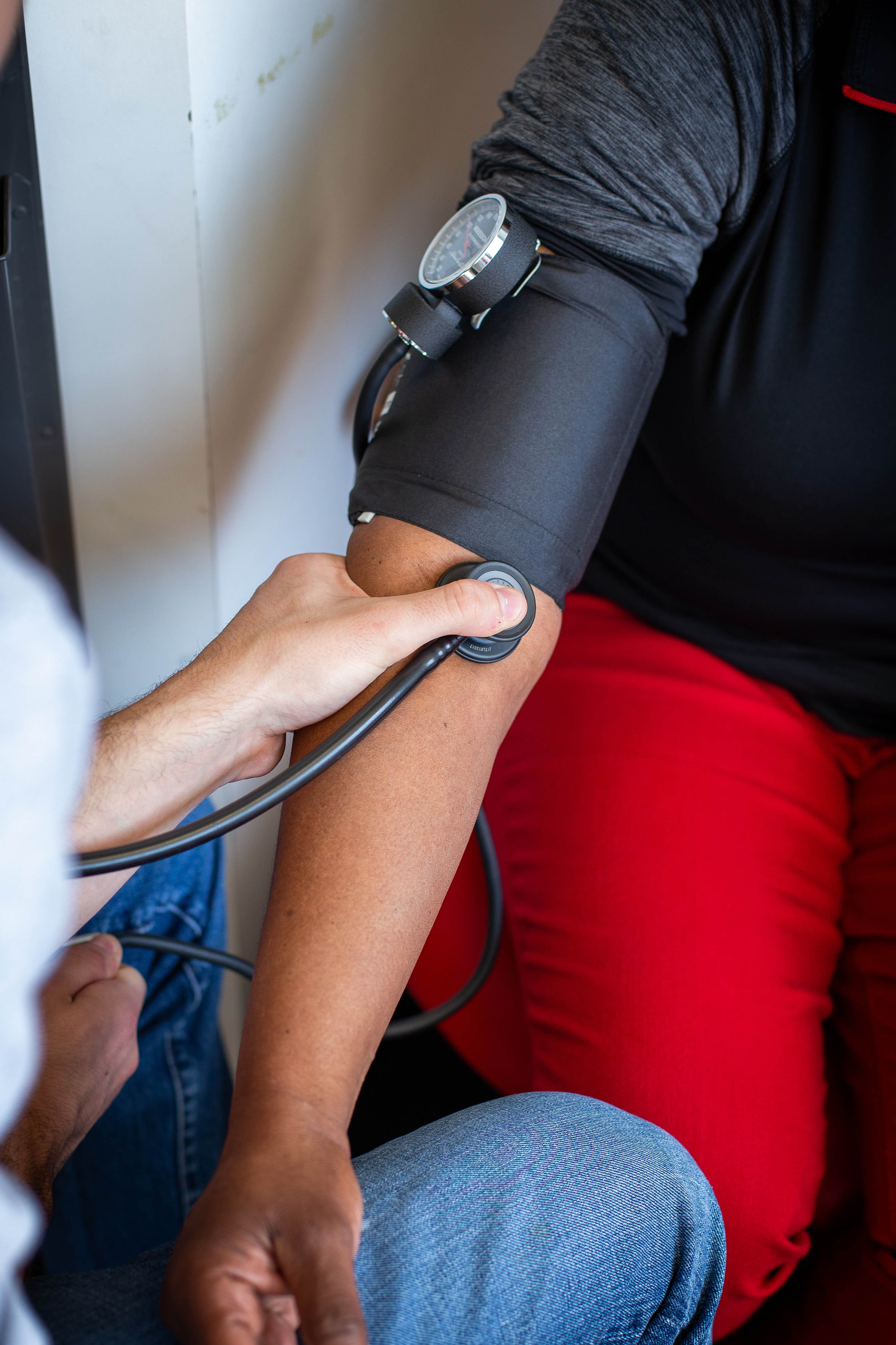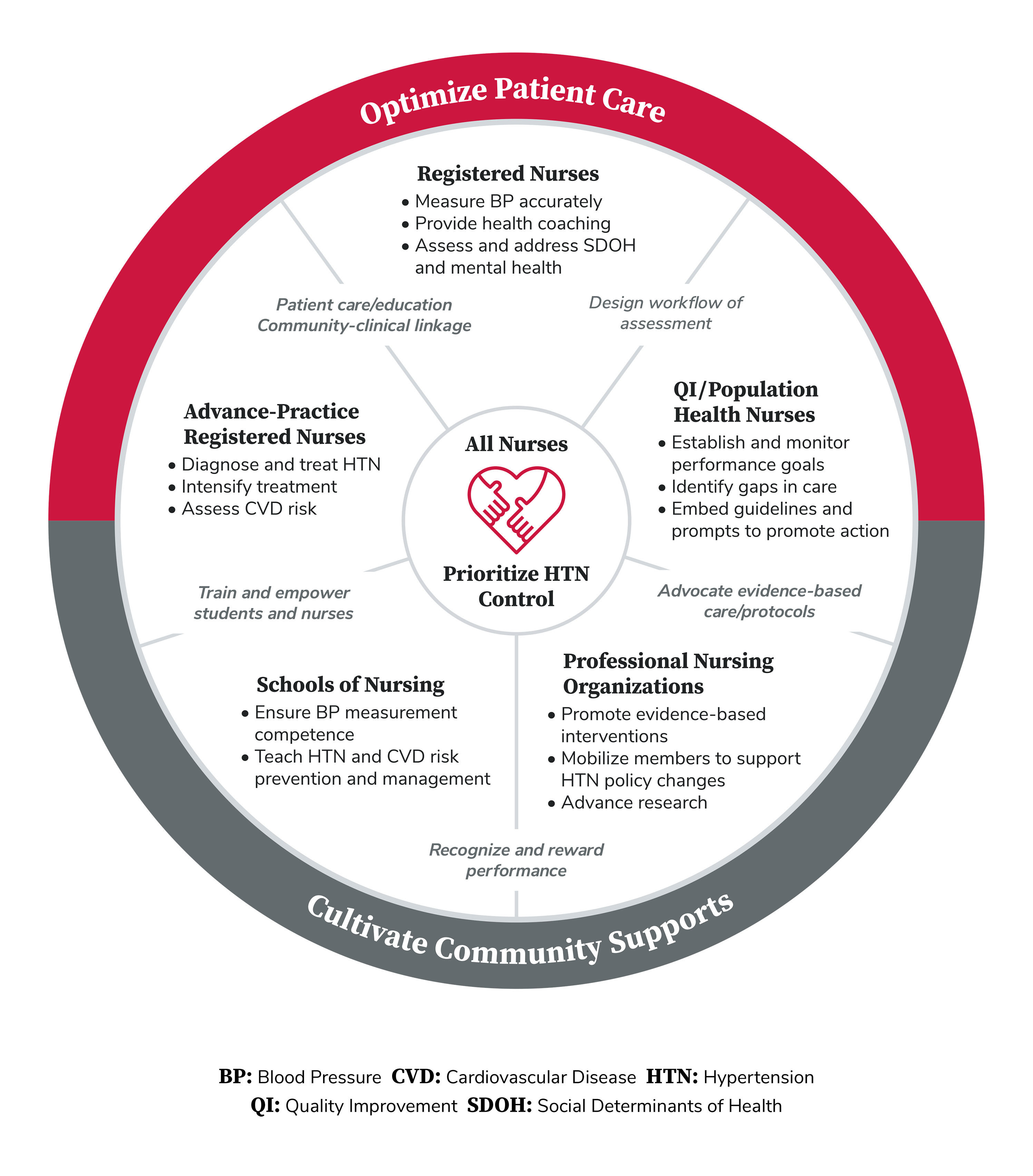
Healing All Hearts
by Kristen Schmidt
Researchers at the College of Nursing have long grappled with intersections of health and equity. Now, the college is placing special emphasis on cardiovascular health – the world’s #1 killer – and health equity. With new tenure-track faculty hires and promising research underway, the college is at the leading edge of healing all hearts.
Possibly no one is better prepared than a nurse to identify, evaluate and weigh the complex factors that play into a person’s health. That whole-person approach that leads nurses to seek information about food, work, money, housing, relationships, family, even faith could be key to understanding the complex relationship among the effects of racism, social determinants of health and health disparities.
In the College of Nursing, several faculty researchers already are conducting work supported by grants from the National Institutes of Health and external foundations around health equity. Recent developments are placing emphasis on closing gaps in diagnosis and outcomes of cardiovascular disease.
In January, the Ohio State Office of Academic Affairs announced the College of Nursing, together with the College of Education and Human Ecology, will be awarded funding in the first round of the Race, Inclusion and Social Equity (RAISE) initiative for their proposal “Improving Cardiovascular Health, the World’s #1 Killer, by Advancing Race and Health Equity Research.” The three tenure-track faculty positions resulting from the proposal will bolster the college’s commitment to healthcare disparities research.

The new hires will build on and expand existing partnerships and projects with colleagues in the College of Education and Human Ecology (EHE) Department of Human Sciences, said Senior Associate Dean for Research and Innovation Mary Beth Happ, PhD, RN, FGSA, FAAN. Over the next 10 years, the university-wide RAISE initiative will add at least 50 faculty positions to disciplines spanning Ohio State’s academic mission. “I’m thrilled we are one of the first colleges to receive funding and to be able to get started planning and recruiting these faculty members,” Happ said. “We noticed this common theme of both health and wellness and cardiovascular health around health disparities. The need for cutting-edge research and interventions to address cardiovascular health disparities is so important.”
You can help expand our research impact. Invest in the College of Nursing Research Fund today.
College of Nursing researchers are exploring connections among cardiovascular health disparities and social determinants of health: economic stability, healthcare access and quality, social support, environment and education.
Just a few examples of current or recent College of Nursing research: Associate professor Janna Stephens, PhD, RN, is developing interventions to assist African American young adults in building health habits that could reduce risk of cardiovascular issues later. Assistant professor Timiya Nolan, PhD, APRN-CNP, ANP-BC, has studied connections between cancer and cardiovascular disease in Black/African American women. Jodi Ford, PhD, RN, associate professor and director of the College of Nursing Stress Science Lab, collaborates with Professor Natasha Slesnick in the Department of Human Sciences in EHE to investigate the inequitable distribution of stress as measured by social determinants of health.
“We have a cadre of researchers that form a great program in health disparities research and research on the effect of racism on health, so we have a wonderful opportunity to expand this area,” Happ said. She added the RAISE proposal also presented an opportunity to build on established research partnerships with EHE, like that between Ford and Slesnick, that are community based.
“Nurses have a lot of power and respect within the community. And I believe it’s really our holistic health orientation that makes us well equipped to work in the community,” said Kathy D. Wright, PhD, APRN-CNS, PMHCNS-BC, assistant professor in the College of Nursing and Harold Amos Medical Faculty Development Scholar. “Our focus on mental and physical self-care is a huge aspect, too, of not so much having all the power but empowering the participant, the patient, to be able to improve their health. That’s where the joy comes from for us as nurses: when we see those changes happening in people.”
Like that of many of her colleagues, Wright’s research often takes a “teach to fish” approach, showing research participants lasting ways they can self-manage their health and, in many cases, pass along that wisdom to friends and family members.
“We often think of access to care in terms of, ‘is there a clinic nearby where I can get my blood pressure medication?’ But we often do not think of access being, how do you create interventions that are inviting to minoritized groups like Blacks and African Americans,” Wright said. “Some of the work I’ve done is to use this process of what we call co-creation, meaning there’s this bi-directional engagement between the participant and the researcher in order to craft culturally informed interventions in an iterative fashion.”
Earlier this year, Wright became one of only a few nurses to be awarded a spot in the prestigious Robert Wood Johnson Foundation Harold Amos Medical Faculty Development Program, which includes four years of $420,000 in research funding. Wright will use the funding in part to study long-term caregivers and their cardiovascular health. It’s a subject she knows well, personally and professionally.
In 2005, her mother died of a heart attack, having been a full-time caretaker for her father, who himself died of complications of Alzheimer’s disease in 2008. It wasn’t until Wright and her siblings took over caregiving of their father that they realized how difficult it must have been for their mother, and how the stress may have contributed to her heart disease.
Wright plans to work with about 90 women throughout the United States, age 40 and over, who have hypertension and responsibility of caring for someone with Alzheimer’s disease or another form of dementia. The women will use Mindfulness in Motion, a program developed by Maryanna Klatt, PhD, director of the Ohio State Center for Integrative Medicine and professor of clinical family medicine in the College of Medicine, plus dietary interventions. They will self-report data over the course of the study.
“The secret sauce is the education, the experiential aspect, and also that social engagement piece of interacting with your peers and people who are having a similar experience as you. It makes it relatable,” Wright said. “I’m very relatable. I also have to struggle with getting physical activity, getting out of the chair, getting some water and managing stress. I’m doing the same things they’re doing.”
Seven years ago, the College of Nursing employed no tenure-track faculty members who identified as Black, Indigenous or people of color. Today, that number has increased to five, plus three clinical faculty who are engaged in research. The RAISE hires will further expand that pipeline. A faculty whose members have diverse backgrounds and experiences has ripple effects on undergraduate and graduate student experience and recruitment, patient care, faculty experience, research exploration and beyond.
“I am really proud of the way our college has developed an inclusive culture and environment and is committed to this culture and environment,” Happ said. “I have seen the change over the nearly 10 years I’ve been on faculty. And I’ve certainly seen that the word gets out that this is a comfortable and welcoming environment. People know if it’s not. Is it perfect? No. We still have a lot of growth to do.”
Cardiovascular disease by the numbers
- Cardiovascular disease (CVD) is the leading cause of death globally.
- An estimated 17.9 million people died from CVD in 2019, representing 32% of all global deaths. Of these deaths, 85% were due to heart attack and stroke.
- Over three quarters of CVD deaths take place in low- and middle-income countries.
- Black persons ages 18–49 years are two times more likely to die from heart disease than white persons.
- Black persons in their 20s, 30s and 40s are more likely to live with or die from conditions that typically occur at older ages in white persons, including heart disease, stroke and diabetes.
Sources: World Health Organization, Centers for Disease Control and Prevention
Nurses’ Urgent Call to Action
“Improving hypertension control and cardiovascular health: An urgent call to action for nursing,” published in Worldviews on Evidence-based Nursing in February, alerted nurses to the need to band together against cardiovascular disease across populations. In response to the 2020 Surgeon General’s Call to Action to Control Hypertension, nursing leaders from 11 national organizations authored this call to action, including Ohio State faculty Kate Gawlik, DNP, APRN-CNP; Kathy D. Wright, PhD, APRN-CNS, PMHCNS-BC; and Bernadette Mazurek Melnyk, PhD, APRN-CNP, FAANP, FNAP, FAAN.
“Long-standing disparities in hypertension awareness, treatment, and control among racial and ethnic populations exist in the United States. High-quality evidence exists for how to prevent and control hypertension and for the role nurses can play in this effort,” they stated.
Find out more at: go.osu.edu/hearthealthcta
The visual tool below was published with the call to action to show specific actions that nursing groups can take.

